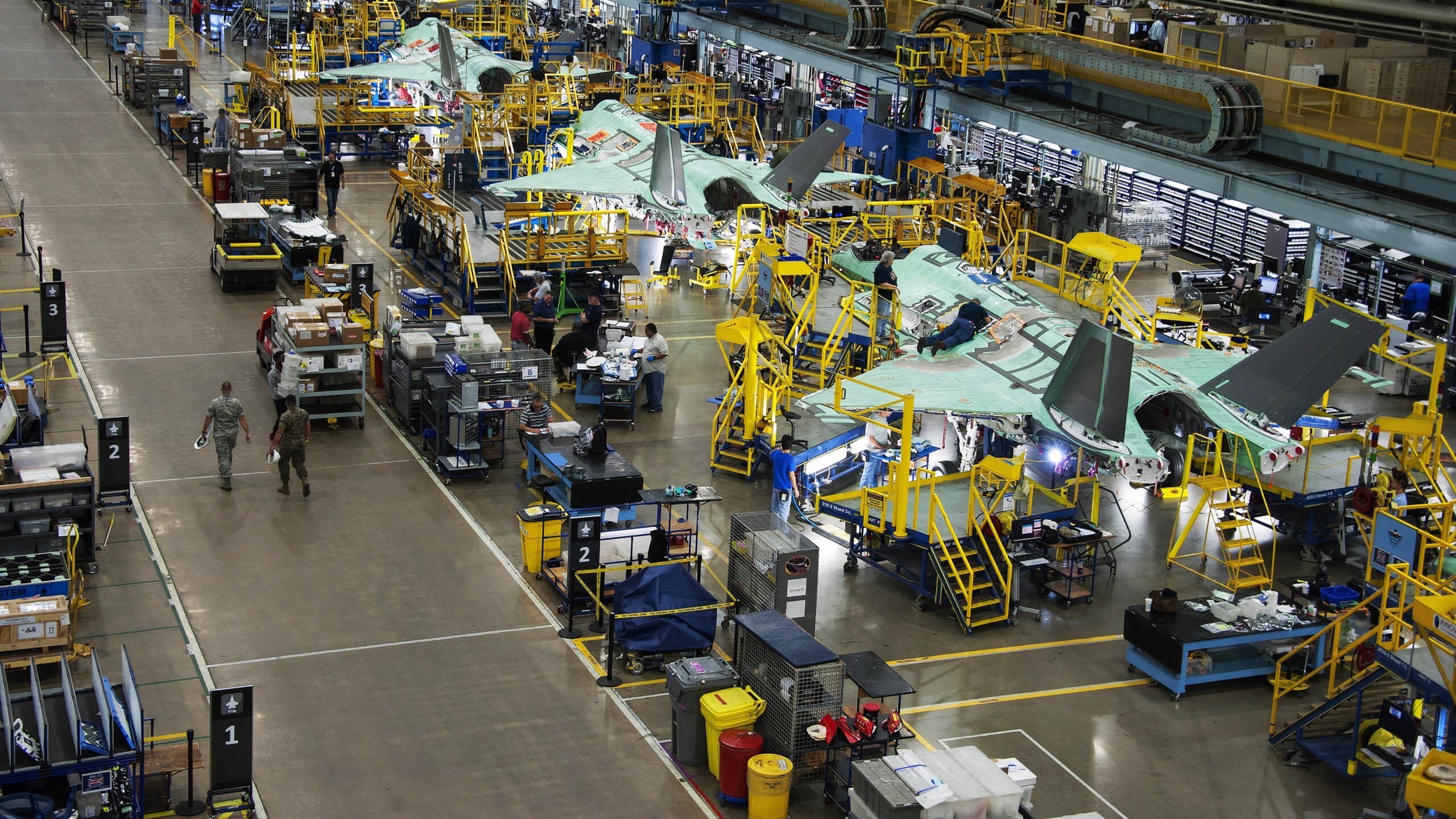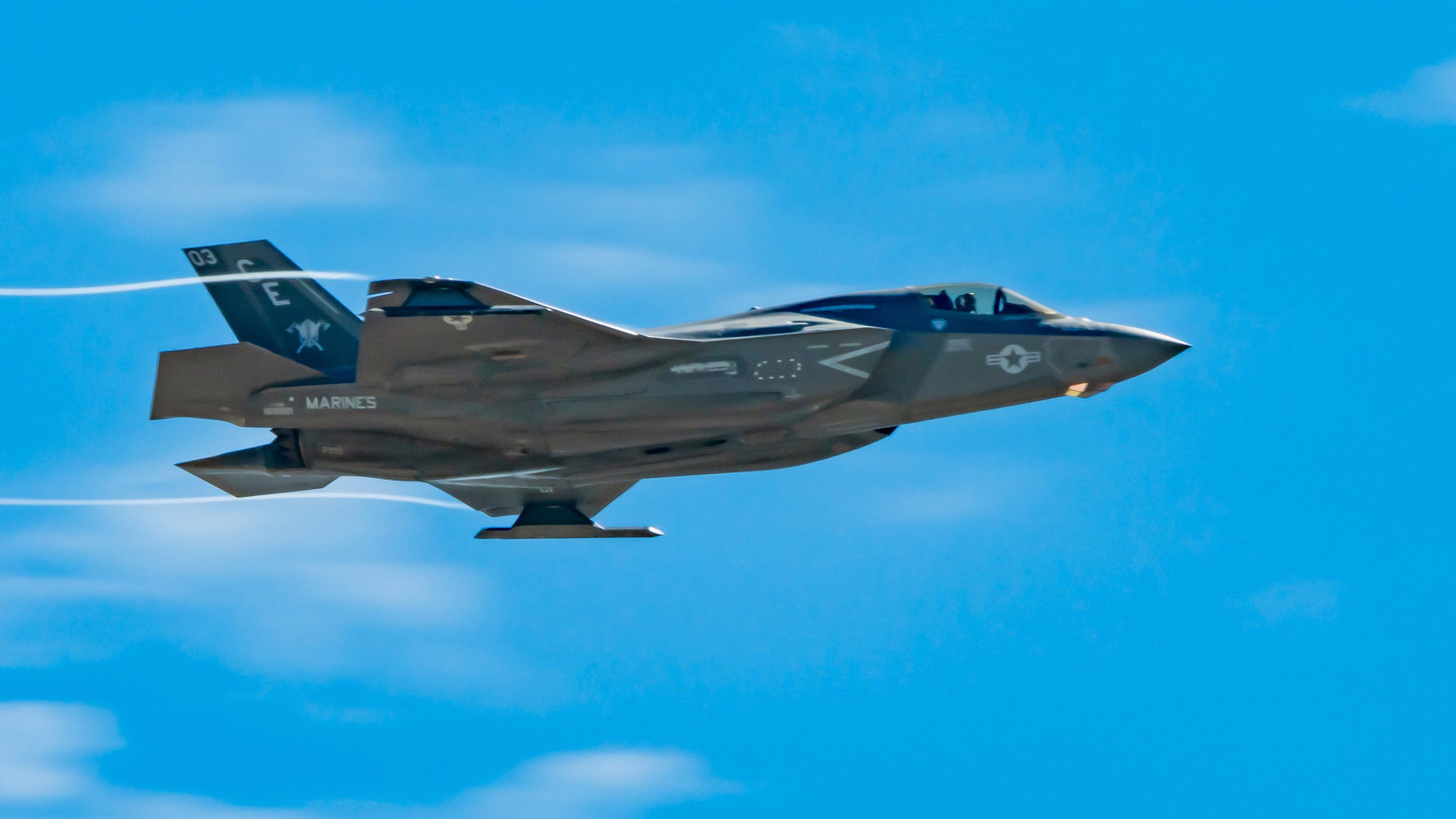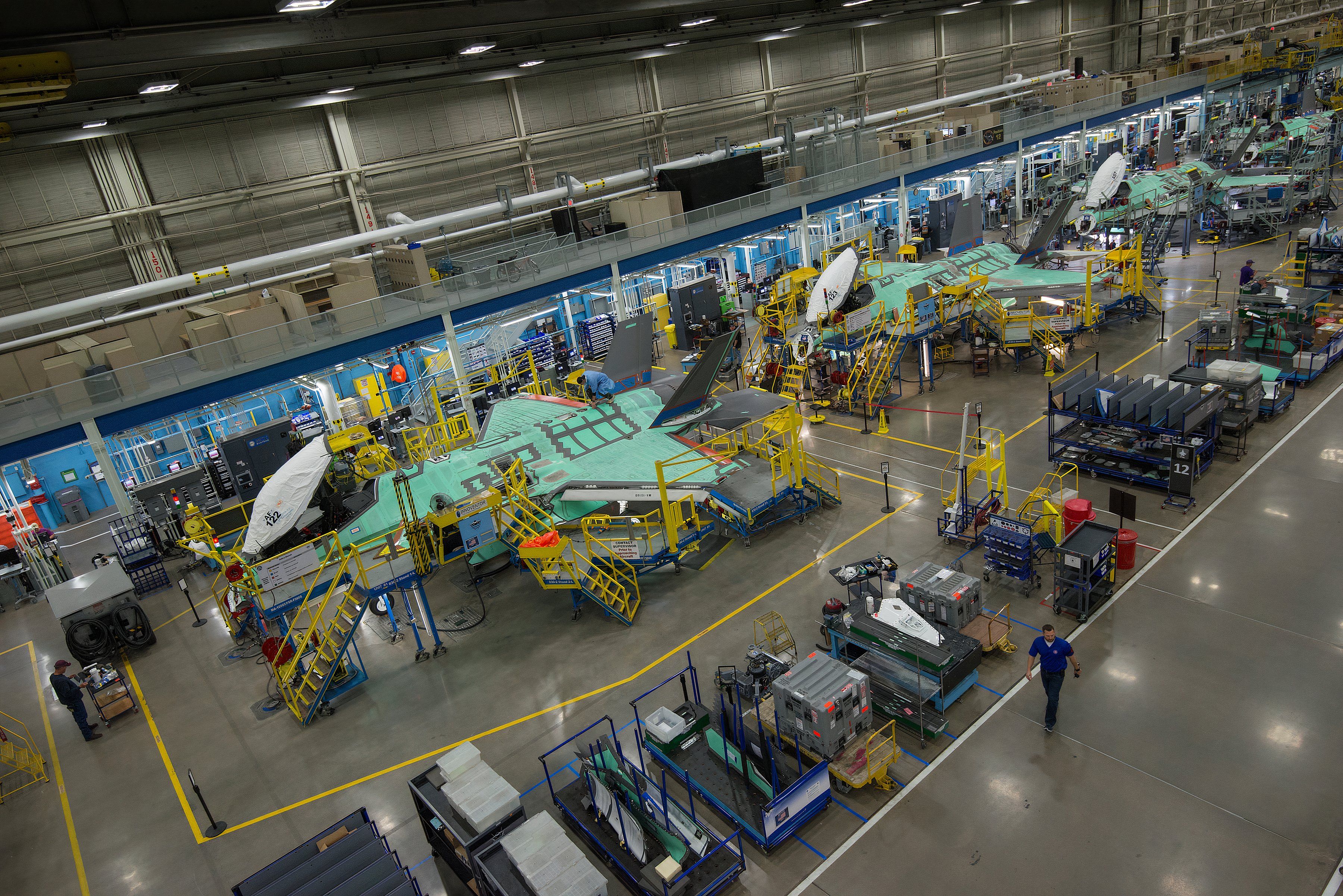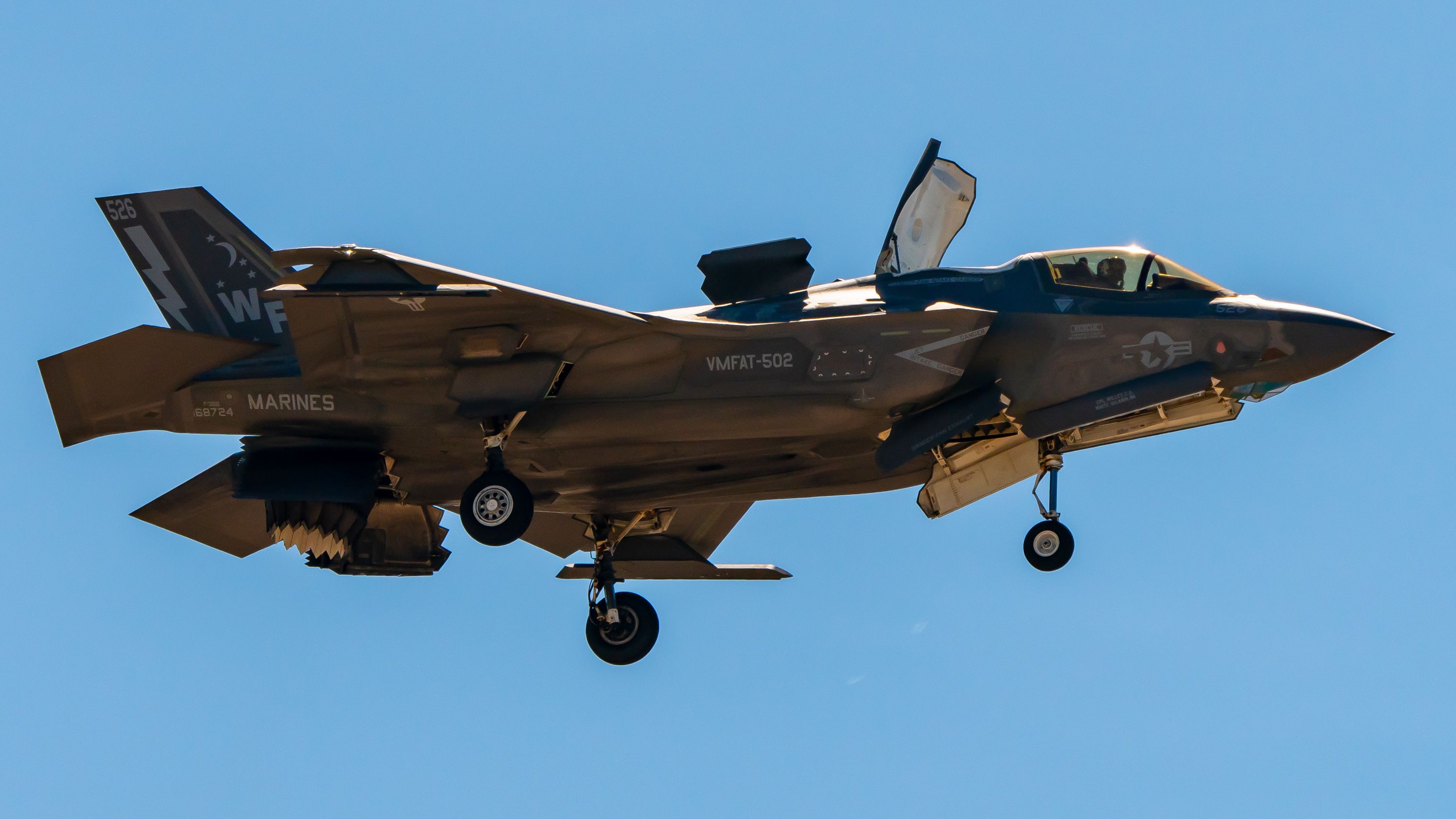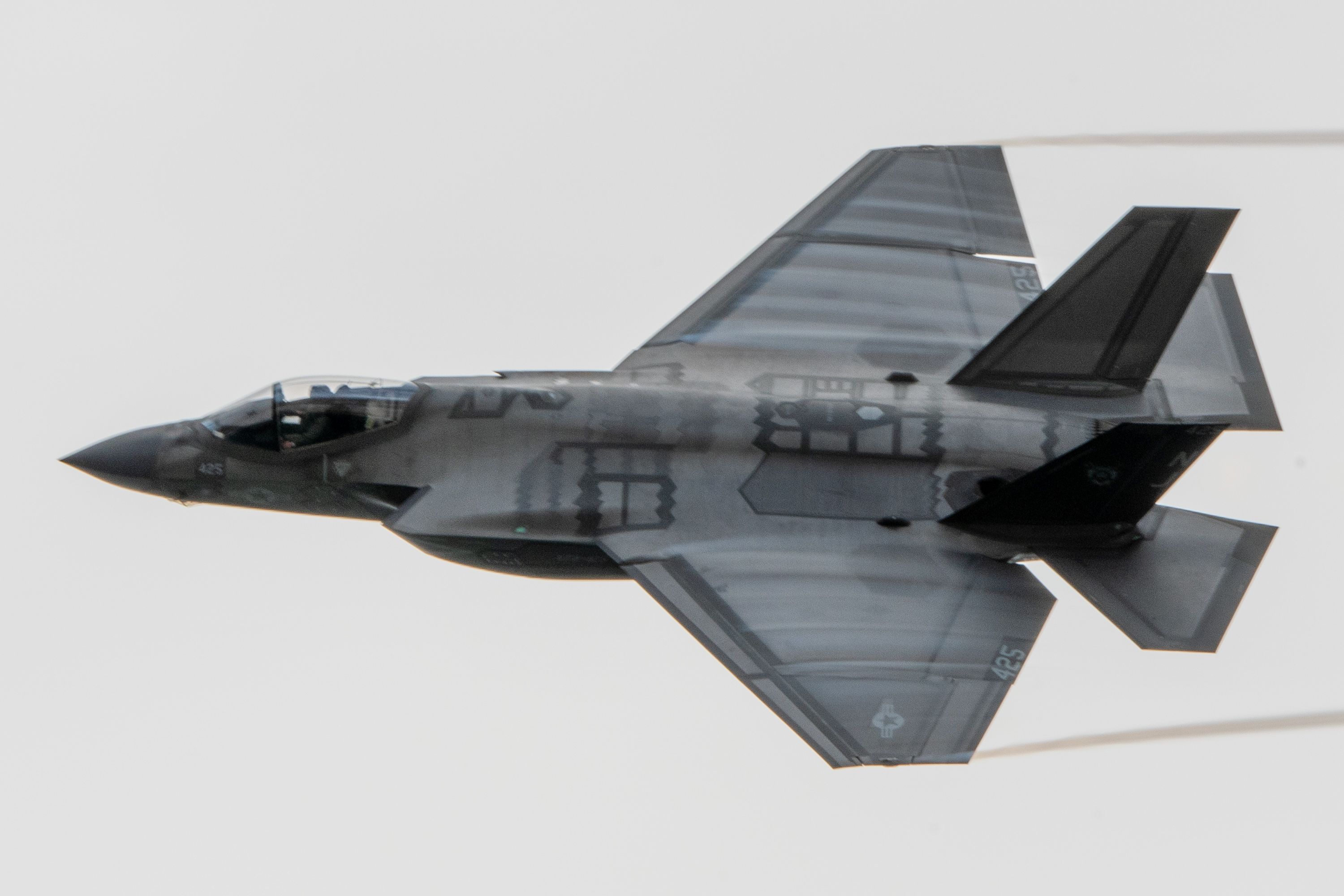Summary
- Technology Refresh 3 is causing delays due to core processor issues.
- Engine production delays due to parts arriving late or defective.
- Other supply chain issues also causing F-35 production out of order, impacting delivery schedule.
The Lockheed Martin F-35’s upgrades are taxing Lockheed Martin F-35 production to the point that there are limited places to store F-35s awaiting upgrades on top of upgrades securely. According to the US Government Accountability Office, which wrote on May 16, other delays impact F-35 production.
Technology Refresh 3 causing delays
The US Government Accountability Office (GAO) is a government office that researches taxpayer dollars’ expenditures and works to find efficiencies. In a May 16 report, the GAO found that F-35 deliveries from the Lockheed Martin factory have been late, with a tardy rate of 91%. Some of the production delays arise from engine issues, which will be discussed later, but there are other factors.
Photo: Joe Kunzler | Simple Flying
For example, the F-35 is undergoing a Technology Refresh 3 (TR-3) upgrade program, providing upgraded software and hardware for full combat capability. The TR-3 program is intended to prepare F-35s to accept the upcoming Block 4 upgrade package, allowing for many more weapons to be employed by the F-35, for starters. However, the core processor at the heart of the TR-3 effort is produced by L3Harris, which has supply chain and quality control issues. However, according to L3Harris, the core processor can take more than 2,900 Dhrystone instructions per second (DMIPS) and support video up to 2560×1600, or 4.1 megapixels. This is higher than 1080p television but less than 4K TV. All of this is to support sharing with the pilots sensor data.

Related
The Ultimate Guide To The F-35 Lightning II’s Advanced Sensor Suite
The Lockheed Martin F-35 is the world’s most advanced 5th -generation fighter jet.
Additionally, according to the GAO report on page 19,
Problems with aircraft software supporting the radar and electronic warfare systems have been especially prevalent, with some test pilots reporting that they had to reboot their entire radar and electronic warfare systems mid-flight to get them back online. Program officials stated that early versions of radar and in-flight systems software can commonly experience rebooting issues. However, according to test officials, even after being nearly a year delayed, TR-3 software continues to be unstable.
The hope is that TR-3 will be partially redone and back on F-35s by June 2024. This will be followed by TR-3 permitting new capabilities like what is in Block 4, like 17 new weapons, jamming capability, and improved networking. TR-3 is crucial for every F-35 back to Lot 10 that was rolled out in 2017—even though this means each F-35 needs two weeks to get the TR-3 system during scheduled maintenance.
Finally, there is this warning from the GAO on pages 20-21:
While parked, Lockheed Martin is responsible for the security and maintenance of the aircraft. If TR-3 software is delayed past April 2024, Lockheed Martin is projected to exceed its maximum parking capacity and will need to develop a plan to accommodate more parked planes. … The parking arrangement, however, presents additional risk to the government should damage occur to some or all of the parked aircraft. … This creates unique financial and schedule risks to DOD.
This presents a severe issue with TR-3 software not being projected to be reworked until June 2024.
Engine production delays
The GAO also found in the report that the F-35 engine contractor Pratt & Whitney had a 100% tardy rate in delivering engines.
Photo: Joe Kunzler | Simple Flying
But why the high tardy rate? Pratt & Whitney has reported to the GAO that parts have come in late plus sometimes defective. Additionally, assembled F135s have failed testing standards, meaning the F135s must be rebuilt. Plus, a high-pressure fuel tube issue was discovered after a December 2022 production F-35B had a fuel tube failure from vibration, causing an accident, resulting in multiple attempts – ultimately successful – to address the issue.
Photo: Joe Kunzler | Simple Flying
One can watch a Sam Eckholm video to see how F135s are made and tested before delivery:
The GAO also found that these issues are somewhat mitigated due to a buffer in engine supply to meet not just production but also customer needs. Additionally, the buffer is rising to 40 engines.
Additionally, the GAO found that efforts to modernize the F135 and manage the heat (thermal) output have run into issues that may cause further delays. The problem is that modernizing the F135 may require upgrading not just the core and gearbox but also various subsystems like the electrical power system. However, modernization is not expected until 2032.
Other F-35 production issues
Supply chain issues have led to parts shortages and production being done out of order. One major aircraft part causing problems is the leading-edge slat on the F-35 – also called a leading-edge flap – on the front of the wing caused by, according to GAO, Tooling, staffing, and raw material constraints”. The leading-edge slat issue is predicted to be resolved by January 2025.
Photo: Joe Kunzler | Simple Flying
Finally, F-35 production has been slowed by the need to redo and sometimes scrap production pieces. The need is amplified by doing F-35 output out of order to keep the production line running despite parts supply issues.
Bottom line
The F-35 is a revolution in fighter aircraft technology and mass production. Over 1,000 of these high technology fighters have been built so far, but as with any technology project with many pieces and those pieces continuously improved, there will be delays to get the fighter jet to the highest quality possible.
What are your thoughts? Please share with civility in the comments.

